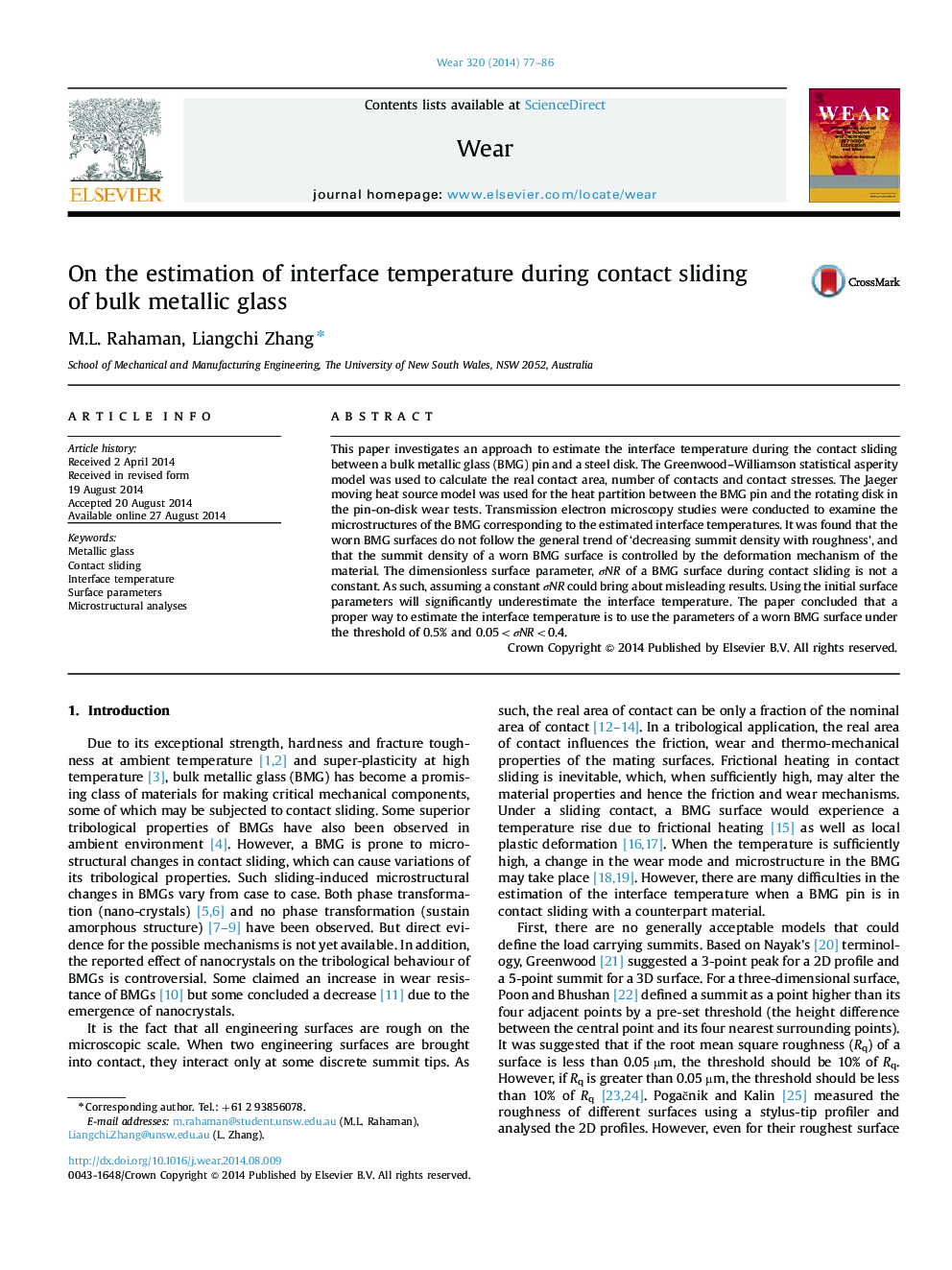| Article ID | Journal | Published Year | Pages | File Type |
|---|---|---|---|---|
| 617168 | Wear | 2014 | 10 Pages |
•Used a novel approach to estimate interface temperature during contact sliding of BMG.•Demonstrated the deformation mechanism–surface topography relationship of BMG.•The initial surface parameters significantly underestimate the interface temperature.•Established the estimated interface temperature–microstructure change correlation.
This paper investigates an approach to estimate the interface temperature during the contact sliding between a bulk metallic glass (BMG) pin and a steel disk. The Greenwood–Williamson statistical asperity model was used to calculate the real contact area, number of contacts and contact stresses. The Jaeger moving heat source model was used for the heat partition between the BMG pin and the rotating disk in the pin-on-disk wear tests. Transmission electron microscopy studies were conducted to examine the microstructures of the BMG corresponding to the estimated interface temperatures. It was found that the worn BMG surfaces do not follow the general trend of ‘decreasing summit density with roughness’, and that the summit density of a worn BMG surface is controlled by the deformation mechanism of the material. The dimensionless surface parameter, σNR of a BMG surface during contact sliding is not a constant. As such, assuming a constant σNR could bring about misleading results. Using the initial surface parameters will significantly underestimate the interface temperature. The paper concluded that a proper way to estimate the interface temperature is to use the parameters of a worn BMG surface under the threshold of 0.5% and 0.05<σNR<0.4.
